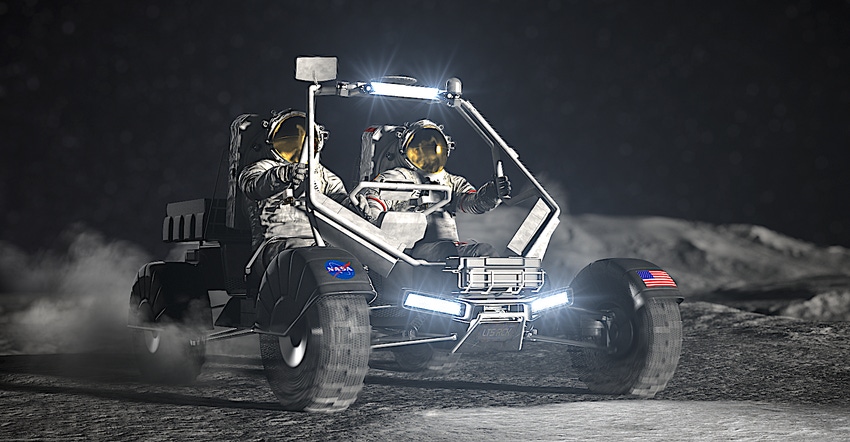NASA Gathers Bids for Lunar Rover Contract
The deadline is approaching for proposals to build NASA’s next lunar rover, with bids due to the space agency by July 10.

NASA's request for proposals calls for a next-generation LTV (Lunar Terrain Vehicle) to go farther and conduct more science than Apollo-era rovers while exploring the Moon’s south pole during Artemis missions.
The winning rover, to be named November 28, will carry astronauts and also work as a remotely controlled vehicle, like a giant version of NASA’s Curiosity and Perseverance rovers on Mars. This will let scientists explore the moon’s south pole remotely even when crews are not on the moon.
Possibilities for remote chores include transporting cargo and scientific payloads between crewed landing sites, enabling additional science returns, resource prospecting, and lunar exploration. The rovers can also investigate future surface mission locations.
The astronauts will use the LTV to travel on the moon and to transport scientific equipment, covering a much larger area than they could on foot. Moonwalking like Michael Jackson provides surprisingly little benefit on the lunar surface, so astronauts will appreciate having access to wheels. The rover is a two-seat lunar pickup truck, with a cargo bed behind the seats and a robotic arm that scientists can use to load objects into the bed remotely when there are no astronauts aboard.
The winning rover will employ critical systems for advanced power management, semi-autonomous driving, communications, navigation, and protection from the extreme environment polar environment, where it might be shaded for long periods of time.
An interesting part of NASA’s car shopping is that they are looking for strictly a lease deal rather than a purchase, with the agency paying for services rather than owning the LTVs. The winning bidder will provide end-to-end services, from development and delivery of the rovers to the lunar surface and execution of operations, though this probably still won’t spare the astronauts from pesky extended warranty robocalls.
NASA is probably going to get hosed on the destination charges, however, as the winning rover supplier must successfully demonstrate that the LTV works properly on the moon before NASA’s astronauts will show up to take the keys and sign the papers.
“We want to leverage industry’s knowledge and innovation, combined with NASA’s history of successfully operating rovers, to make the best possible surface rover for our astronaut crews and scientific researchers,” said Lara Kearney, manager of NASA’s Extravehicular Activity and Human Surface Mobility program at the agency’s Johnson Space Center in Houston.
While the contract is scheduled for award this year, the space agency expects for astronauts to start using the LTV on the planned Artemis V mission that is currently projected for 2029. Before then, the rover can do remote-control science or even commercial work after it lands on the moon.
Bidding companies are expected to include Leidos, Lockheed Martin in partnership with General Motors and Lunar Outpost, Nissan North America, Northrop Grumman in partnership with AVL, Sierra Space, Teledyne Brown Engineering, and Venturi Astrolab, according to a report in Aviation Week.
About the Author(s)
You May Also Like





